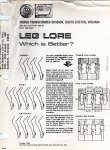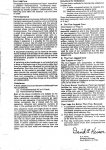brian john
Senior Member
- Location
- Leesburg, VA
We have a site that at present has a delta-wye 12470-208/120 VAC Transformer, the transformer is maxed out and the utility is upgrading to a larger transformer, the new transformer they are providing is a wye-wye 12470/7200 to 208/120 VAC.
My question would be why, the site is a large warehouse converted to refrigeration storage, they have maybe 500 super freezers (my term) that keep products at -35 F. I believe all the compressors are 208 single phase (maybe 208 3 phase), if this is important I can get the actual motor specs). I do not believe there are any large harmonic rich loads.
In reading about wye-wye there seem to be some issues that you do not have with delta-wye transformers.
My question would be why, the site is a large warehouse converted to refrigeration storage, they have maybe 500 super freezers (my term) that keep products at -35 F. I believe all the compressors are 208 single phase (maybe 208 3 phase), if this is important I can get the actual motor specs). I do not believe there are any large harmonic rich loads.
In reading about wye-wye there seem to be some issues that you do not have with delta-wye transformers.


